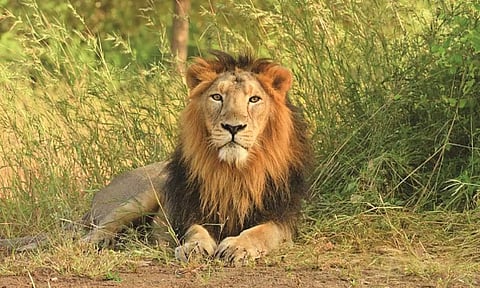

CHENNAI: The government reported this week that 397 lions had died in Gujarat between 2019 and 2021, with around 10 per cent of them due to unnatural reasons. Minister of State for Environment, Ashwini Kumar Choubey informed the Rajya Sabha that this included 182 cubs between 0-1 years. The Minister also spoke about the translocation of lions from Gujarat to Madhya Pradesh, a case languishing in the Supreme Court. The release of this data is telling, viewed in the backdrop of our ambitious plans to translocate cheetahs from Namibia to Madhya Pradesh.
In August this year, Tblisi, a female cheetah, moved from Namibia, had breathed her last at Kuno National Park. She was the ninth cheetah to die at Kuno, including three of the four cubs born there. With 30% of the 20 translocated cheetahs perishing over a period of four months, ecologists had sounded alarm bells on the hackneyed implementation of conservation protocols in the country. While the Centre remained steadfast that all cheetah deaths were due to natural causes, the examination revealed the presence of injuries, including two with maggot infested neck infections.
Forest officials in MP have also parroted that Project Cheetah is on the right track, in spite of the fatalities, which are a familiar concern in African jungles as well. India’s tone-deaf approach to conservation came under the spotlight by a development in February this year. The Bihar government had hired 13 professional gunsmen to kill wild boars and ‘ghodparas’ or nilgais, in an attempt to save crops. The directive to eliminate them came in the aftermath of complaints from farmers who said these herds destroy acres of crops in a day. In some districts of Bihar, agrarians were compelled to burn the midnight oil and patrol farms all night to protect their ripening crops.
Back then, the State Chief Wildlife Warden had assuaged the concern of animal rights activists by saying that both nilgais and wild boar are vermin and could be culled, as per laid down procedures. But, a quick run through publicly available data tells us that in India, the nilgai is protected under Schedule III of the Wildlife Protection Act of 1972. The decision to cull the beasts had stoked a raw nerve among activists who urged the authorities to look for a long term solution to the problem.
Apart from loss of habitat and prey due to human encroachment upon reserve forest zones, as well as recurring man-animal conflicts, and run-ins with power and road infrastructure, there are many challenges facing conservation. In April 2019, the Calcutta High Court had issued a directive that placed a complete embargo on hunting festivals in the districts of south Bengal. Three years later in May 2022, an NGO called Human and Environment Alliance League (HEAL) filed a contempt petition against the Chief Wildlife Warden of the state for failing to comply with the HC directive. The petition alleged that hunting festivals were continuing unabated in violation of the 2019 order.
Observers have lamented the tendency of Indian courts to form panels and committees for preservation that are toothless, when it comes to on-ground enforcement and action. The callousness with which the issue of the protection of endangered animals is approached in India is a sure shot recipe to ensure that in a few years from now, these creatures might exist only as part of our natural history museums.